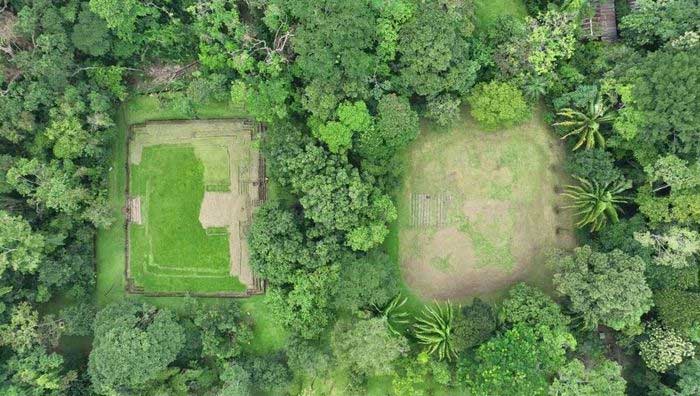The UNESCO organization has officially recognized the ancient city of Tak’alik Ab’aj in Guatemala as a World Heritage Site. This city boasts a history spanning 1,700 years, transitioning from the Olmec civilization to the early period of Maya culture.
Tak’alik Ab’aj is an archaeological park located on the Pacific coast of Guatemala. The city played a significant role in the transition from the Olmec civilization to Maya culture. It was one of the most important economic and cultural centers in southern Guatemala during the pre-Columbian era. The park is situated at an elevation of 600 meters above sea level, on the slopes of the volcanic mountain range that runs along the Pacific coast.

Archaeological area of Tak’alik Ab’aj seen from above. (Photo: Reuters).
To this day, many artifacts and ruins discovered at the National Archaeological Park of Tak’alik Ab’aj in Guatemala mark the transition from Olmec culture to the early Maya civilization. This site also features numerous early Maya architectural structures. According to the Guatemalan Ministry of Cultural and Natural Heritage, with the findings, the National Archaeological Park of Tak’alik Ab’aj is a sacred site with many important connections to Guatemalan culture. It showcases diverse flora and fauna, as well as the spiritual beliefs and worldview of the Maya.

Some artifacts found in the archaeological area of Tak’alik Ab’aj. (Photo: Reuters).
Patricio Zambrano, a representative of the United Nations Educational, Scientific and Cultural Organization (UNESCO) in Guatemala, stated: “This site possesses exceptional universal values. Among these remarkable values, we must highlight the brilliant creative work of humanity, which allows us to showcase unique and special evidence of a cultural tradition or a civilization that has disappeared.”
The Guatemalan government also noted that this location is referred to as the “City of Light” of the Southern Coast, where the early developments in technology and astronomy emerged.


















































